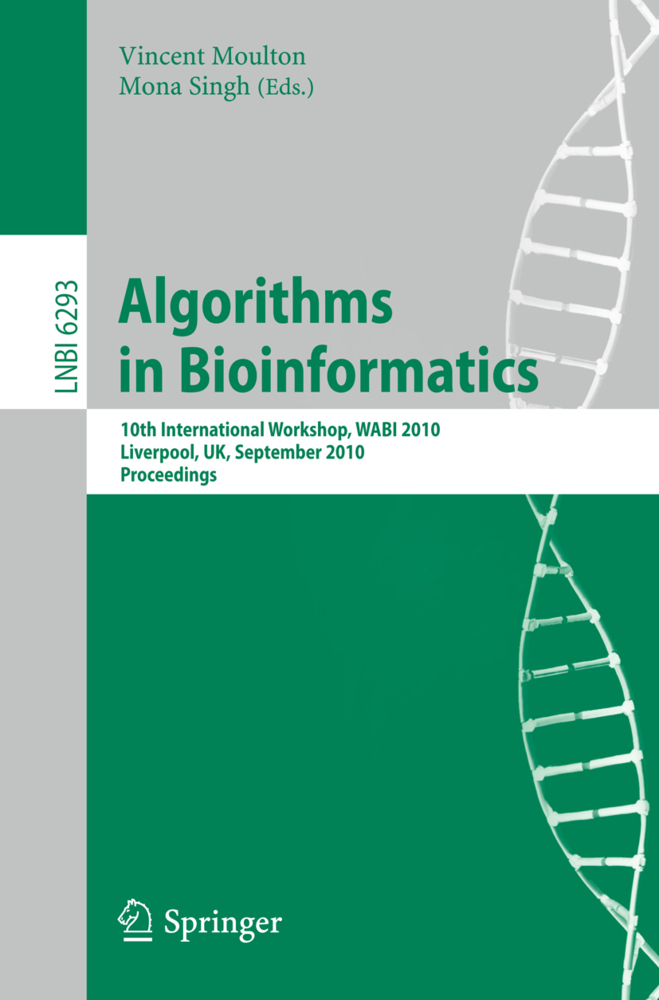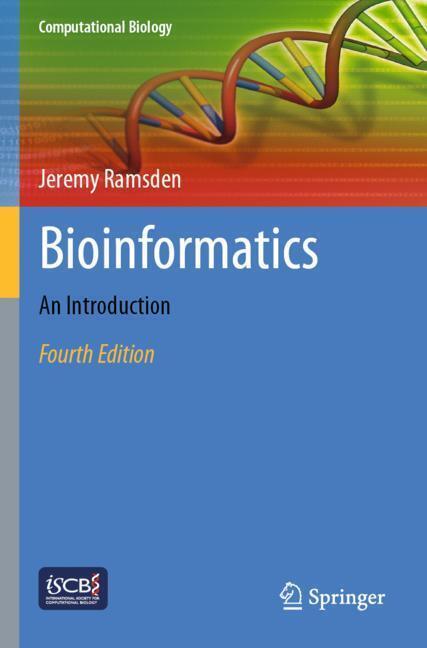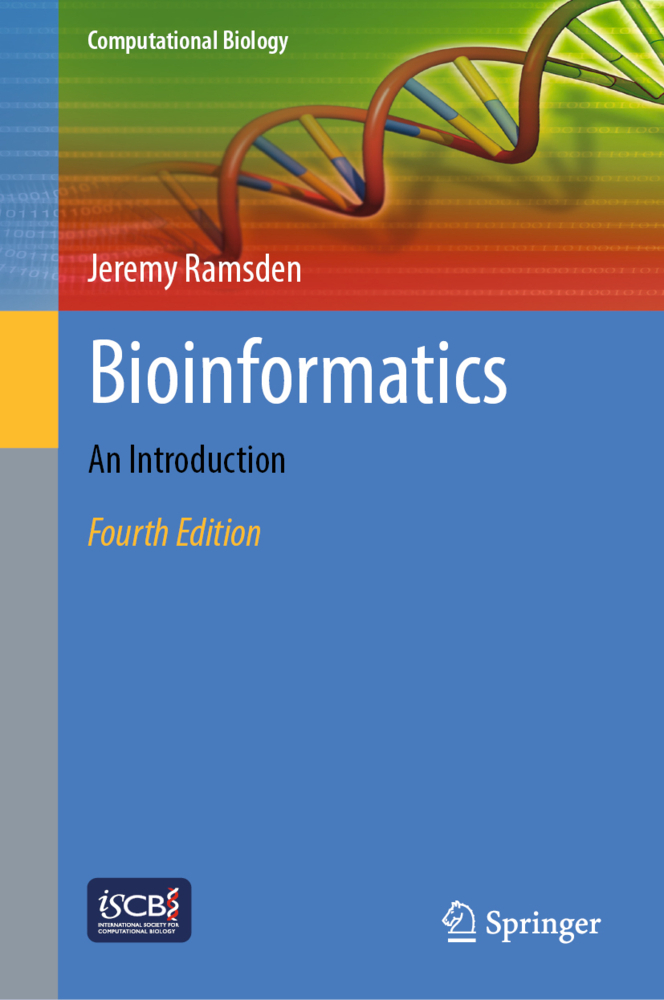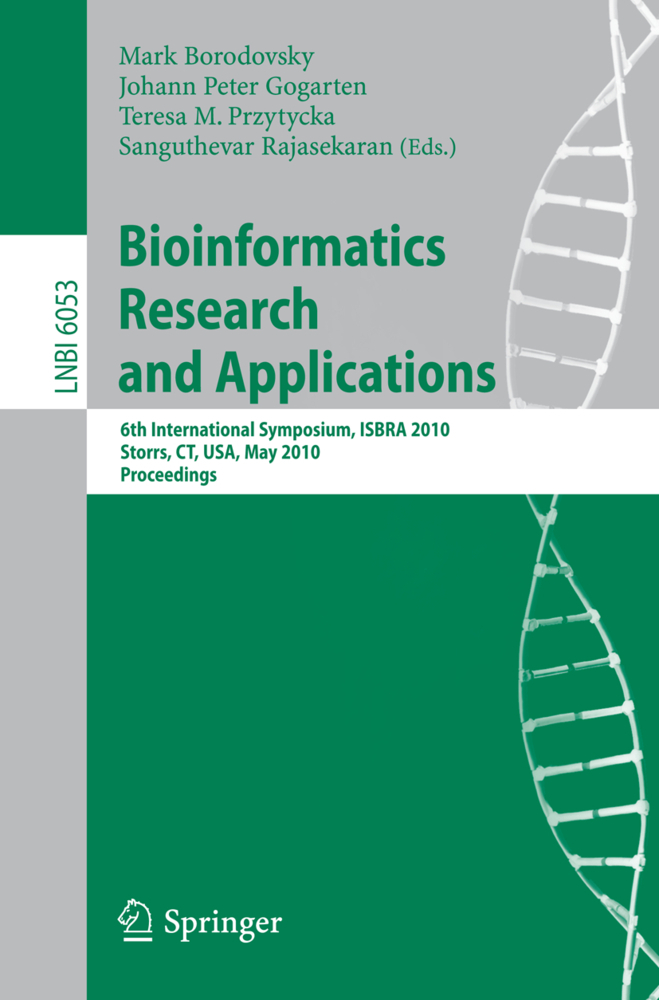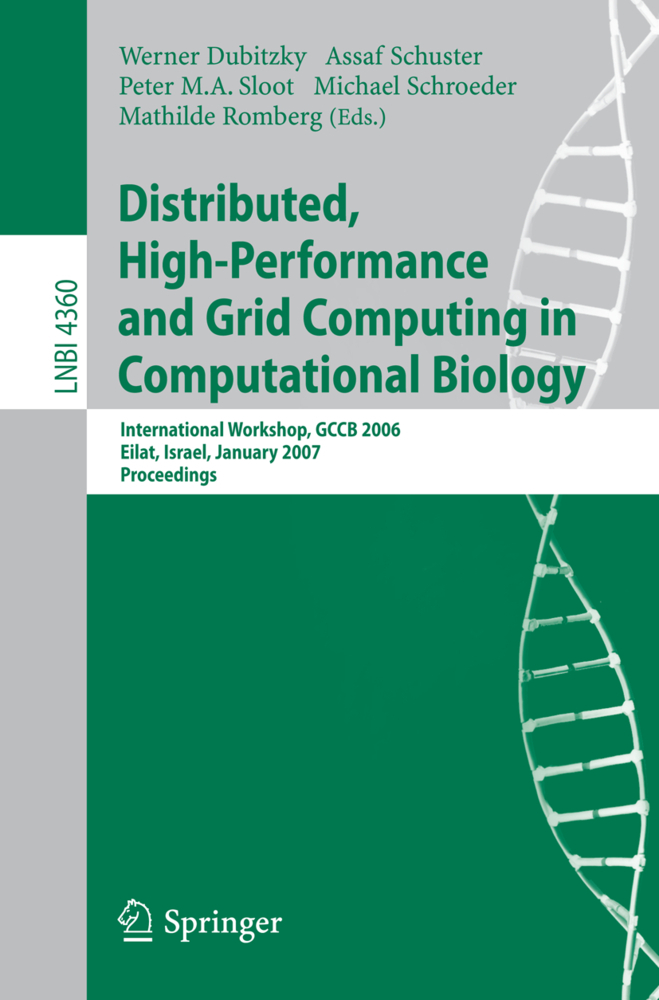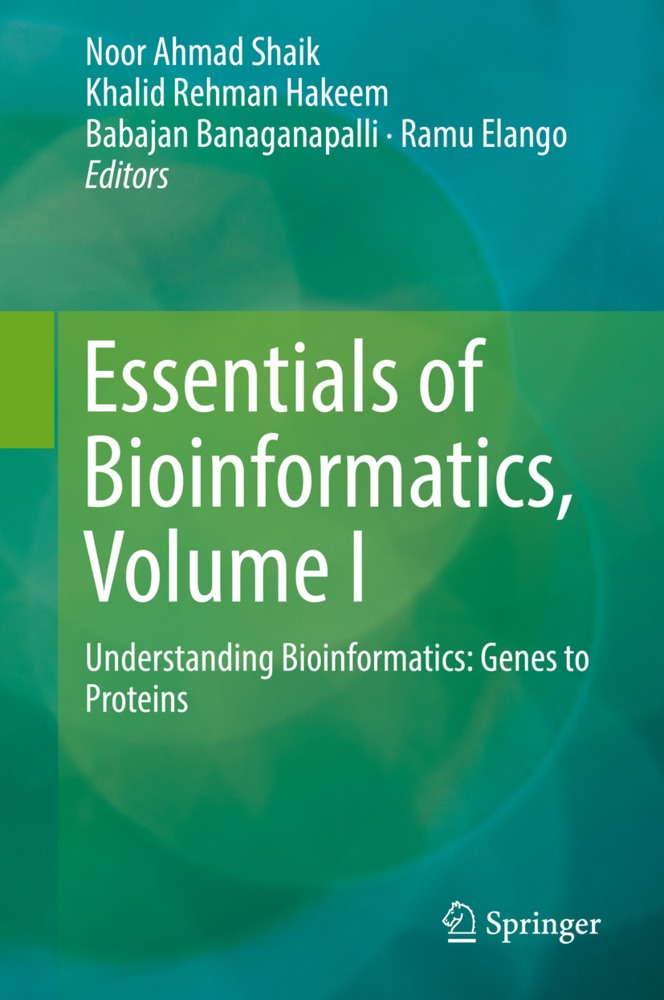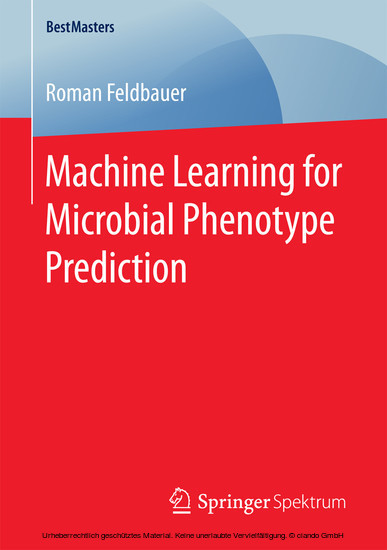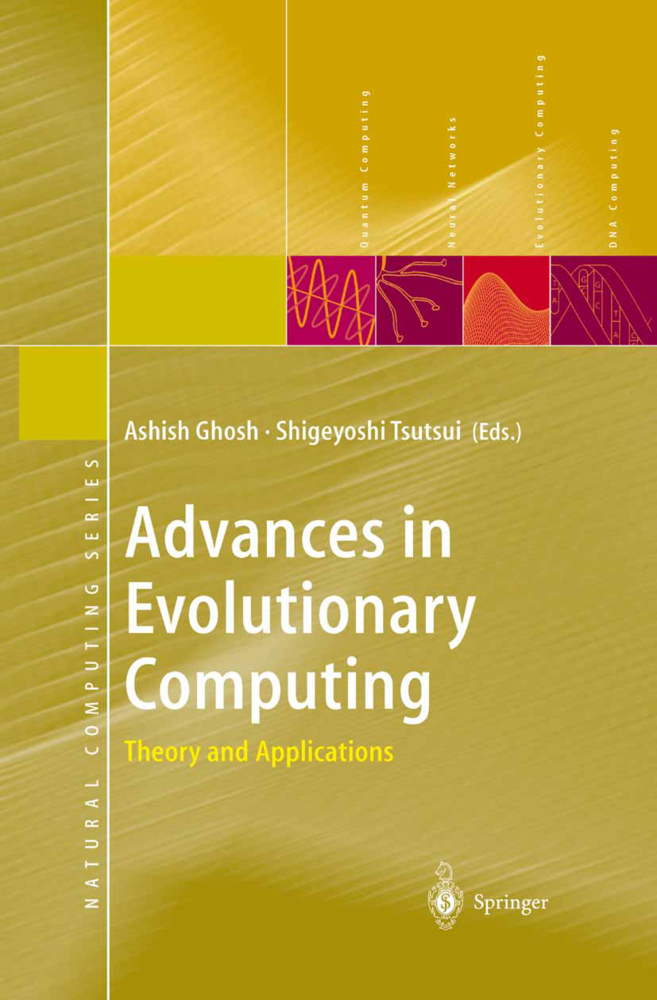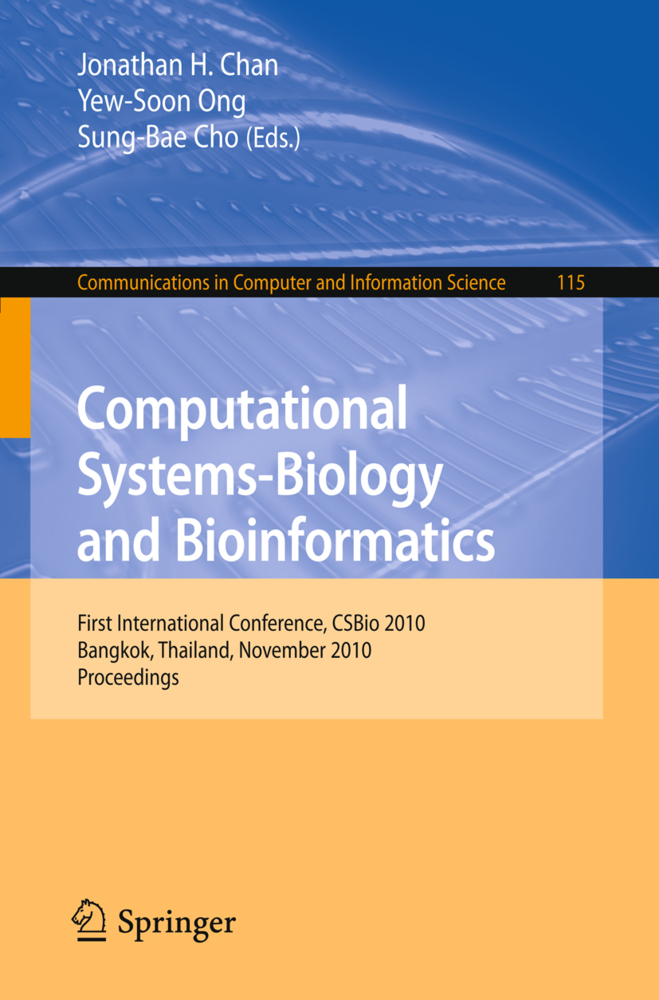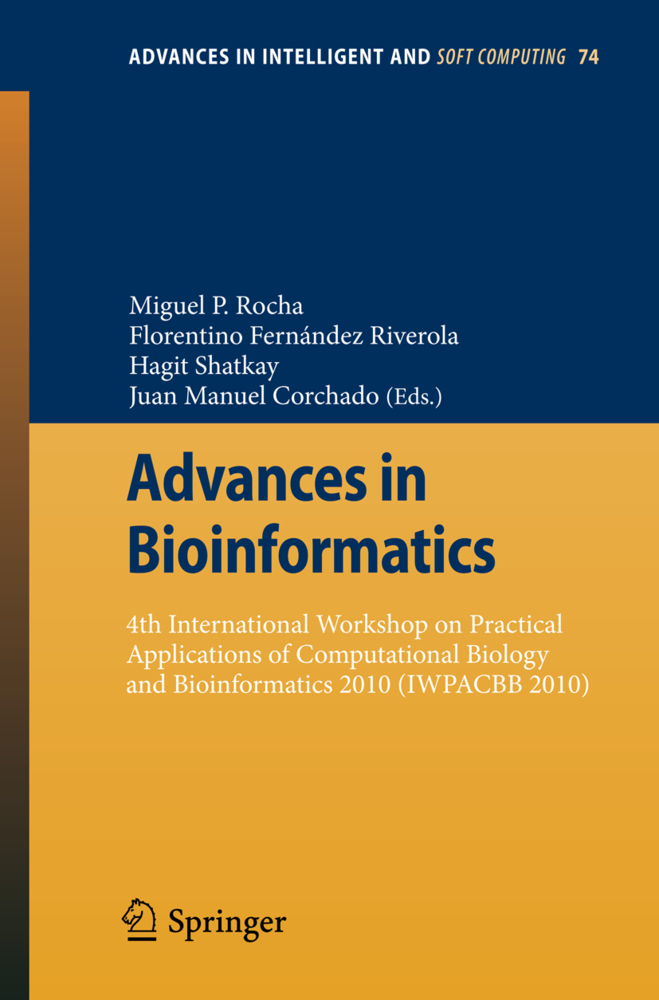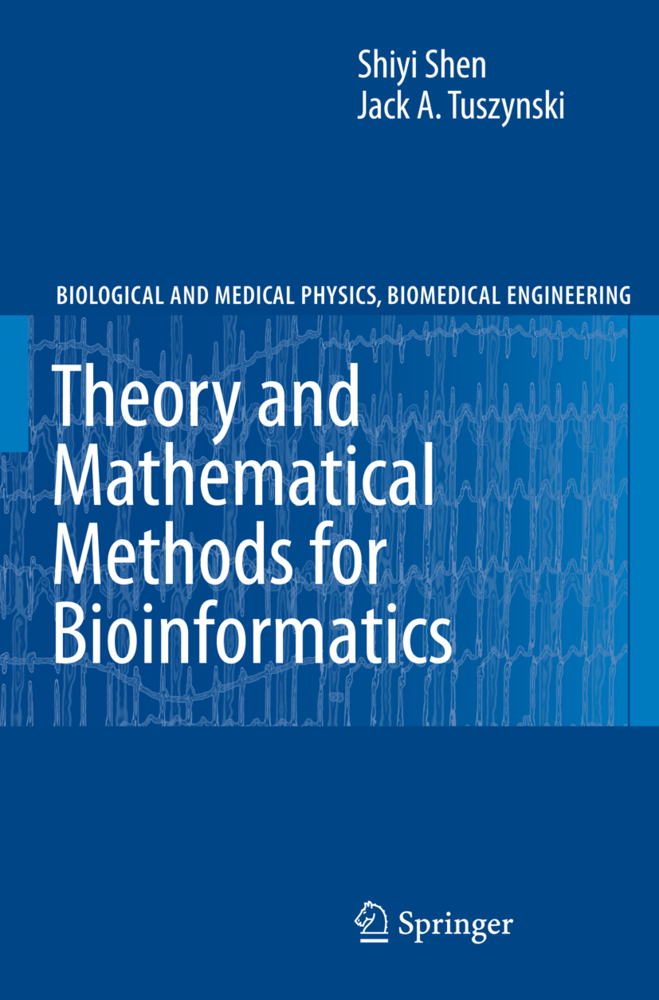Algorithms in Bioinformatics
10th International Workshop, WABI 2010, Liverpool, UK, September 6-8, 2010, Proceedings
Algorithms in Bioinformatics
10th International Workshop, WABI 2010, Liverpool, UK, September 6-8, 2010, Proceedings
We are pleased to present the proceedings of the 10th Workshop on Algorithms in Bioinformatics (WABI 2010) which took place in Liverpool, UK, Sept- ber 6 8, 2010. The WABI 2010 workshop was part of the four ALGO 2010 conference meetings, which, in addition to WABI, included ESA, ATMOS, and WAOA. WABI 2010 was hosted by the University of Liverpool Department of Computer Science, and sponsored by the European Association for Theoretical Computer Science (EATCS) and the International Society for Computational Biology(ISCB). Seemore details. The Workshop in Algorithms in Bioinformatics highlights research in al- rithmicworkforbioinformatics,computationalbiologyandsystemsbiology.The emphasis is mainly on discrete algorithms and machine-learning methods that address important problems in molecular biology, that are founded on sound models, that are computationally e?cient, and that havebeen implemented and tested in simulations and on real datasets. The goal is to present recent research results, including signi?cant work-in-progress,and to identify and explore dir- tions of future research.
Sparse Estimation for Structural Variability
Data Structures for Accelerating Tanimoto Queries on Real Valued Vectors
Sparsification of RNA Structure Prediction Including Pseudoknots
Prediction of RNA Secondary Structure Including Kissing Hairpin Motifs
Reducing the Worst Case Running Times of a Family of RNA and CFG Problems, Using Valiant's Approach
Comparative Genomics
Reconstruction of Ancestral Genome Subject to Whole Genome Duplication, Speciation, Rearrangement and Loss
Genomic Distance with DCJ and Indels
Listing All Sorting Reversals in Quadratic Time
Haplotype and Genotype Analysis
Discovering Kinship through Small Subsets
Fixed-Parameter Algorithm for Haplotype Inferences on General Pedigrees with Small Number of Sites
Haplotypes versus Genotypes on Pedigrees
Haplotype Inference on Pedigrees with Recombinations and Mutations
High-throughput Data Analysis: Next Generation Sequencing and Flow Cytometry
Identifying Rare Cell Populations in Comparative Flow Cytometry
Fast Mapping and Precise Alignment of AB SOLiD Color Reads to Reference DNA
Design of an Efficient Out-of-Core Read Alignment Algorithm
Estimation of Alternative Splicing isoform Frequencies from RNA-Seq Data
Networks
Improved Orientations of Physical Networks
Enumerating Chemical Organisations in Consistent Metabolic Networks: Complexity and Algorithms
Efficient Subgraph Frequency Estimation with G-Tries
Phylogenetics
Accuracy Guarantees for Phylogeny Reconstruction Algorithms Based on Balanced Minimum Evolution
The Complexity of Inferring a Minimally Resolved Phylogenetic Supertree.-Reducing Multi-state to Binary Perfect Phylogeny with Applications to Missing, Removable, Inserted, and Deleted Data
An Experimental Study of Quartets MaxCut and Other Supertree Methods
An Efficient Method for DNA-Based Species Assignment via Gene Tree and Species Tree Reconciliation
Sequences, Strings and Motifs
Effective Algorithms for Fusion Gene Detection
Swiftly Computing Center Strings
Speeding Up Exact Motif Discovery by Bounding the Expected Clump Size
Pair HMM Based Gap Statistics for Re-evaluation of Indels in Alignments with Affine Gap Penalties
Quantifying the Strength of Natural Selection of a Motif Sequence.
Biomolecular Structure: RNA, Protein and Molecular Comparison
A Worst-Case and Practical Speedup for the RNA Co-folding Problem Using the Four-Russians IdeaSparse Estimation for Structural Variability
Data Structures for Accelerating Tanimoto Queries on Real Valued Vectors
Sparsification of RNA Structure Prediction Including Pseudoknots
Prediction of RNA Secondary Structure Including Kissing Hairpin Motifs
Reducing the Worst Case Running Times of a Family of RNA and CFG Problems, Using Valiant's Approach
Comparative Genomics
Reconstruction of Ancestral Genome Subject to Whole Genome Duplication, Speciation, Rearrangement and Loss
Genomic Distance with DCJ and Indels
Listing All Sorting Reversals in Quadratic Time
Haplotype and Genotype Analysis
Discovering Kinship through Small Subsets
Fixed-Parameter Algorithm for Haplotype Inferences on General Pedigrees with Small Number of Sites
Haplotypes versus Genotypes on Pedigrees
Haplotype Inference on Pedigrees with Recombinations and Mutations
High-throughput Data Analysis: Next Generation Sequencing and Flow Cytometry
Identifying Rare Cell Populations in Comparative Flow Cytometry
Fast Mapping and Precise Alignment of AB SOLiD Color Reads to Reference DNA
Design of an Efficient Out-of-Core Read Alignment Algorithm
Estimation of Alternative Splicing isoform Frequencies from RNA-Seq Data
Networks
Improved Orientations of Physical Networks
Enumerating Chemical Organisations in Consistent Metabolic Networks: Complexity and Algorithms
Efficient Subgraph Frequency Estimation with G-Tries
Phylogenetics
Accuracy Guarantees for Phylogeny Reconstruction Algorithms Based on Balanced Minimum Evolution
The Complexity of Inferring a Minimally Resolved Phylogenetic Supertree.-Reducing Multi-state to Binary Perfect Phylogeny with Applications to Missing, Removable, Inserted, and Deleted Data
An Experimental Study of Quartets MaxCut and Other Supertree Methods
An Efficient Method for DNA-Based Species Assignment via Gene Tree and Species Tree Reconciliation
Sequences, Strings and Motifs
Effective Algorithms for Fusion Gene Detection
Swiftly Computing Center Strings
Speeding Up Exact Motif Discovery by Bounding the Expected Clump Size
Pair HMM Based Gap Statistics for Re-evaluation of Indels in Alignments with Affine Gap Penalties
Quantifying the Strength of Natural Selection of a Motif Sequence.
| ISBN | 978-3-642-15293-1 |
|---|---|
| Artikelnummer | 9783642152931 |
| Medientyp | Buch |
| Copyrightjahr | 2010 |
| Verlag | Springer, Berlin |
| Umfang | XII, 376 Seiten |
| Abbildungen | XII, 376 p. 94 illus. |
| Sprache | Englisch |

